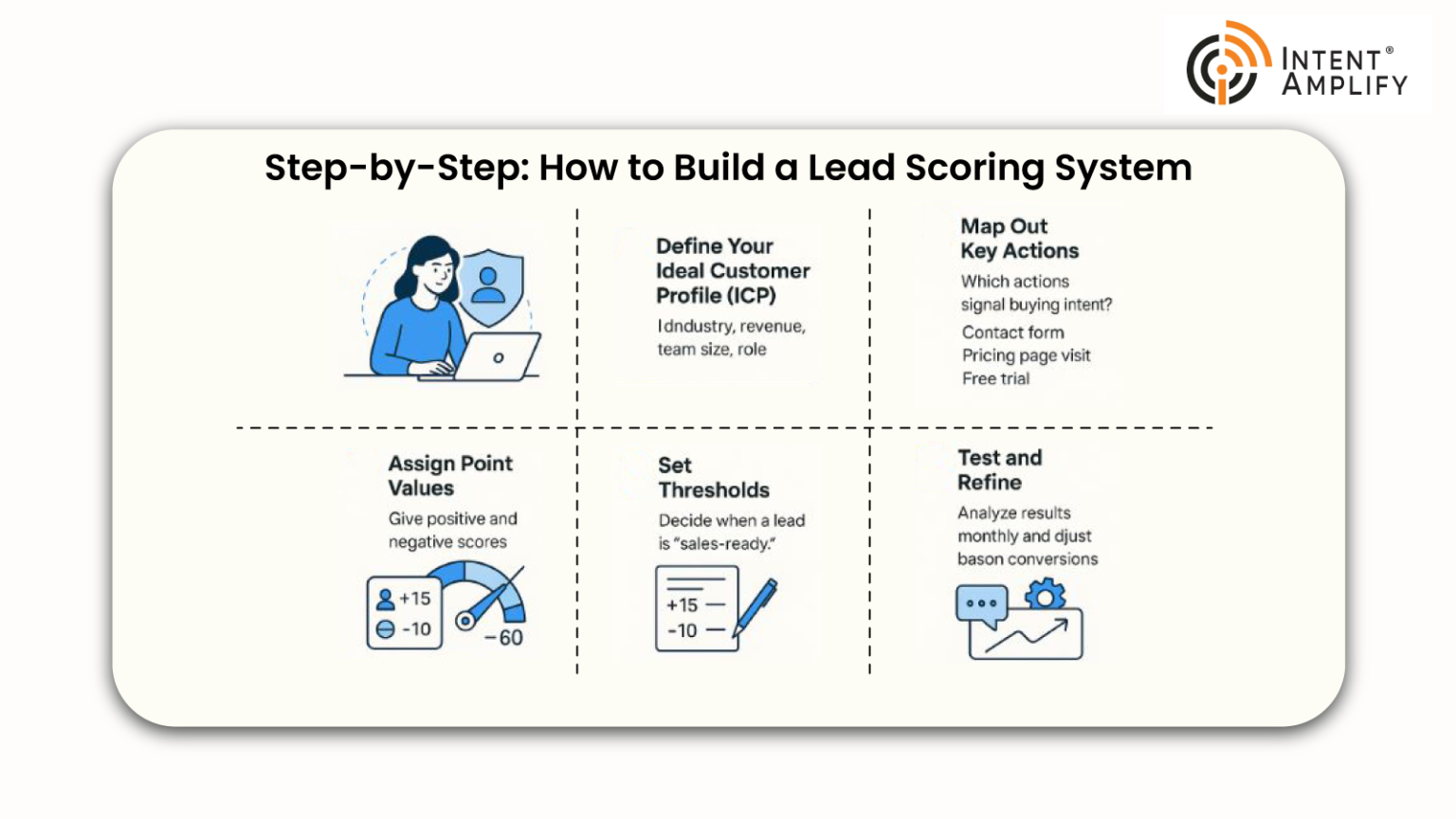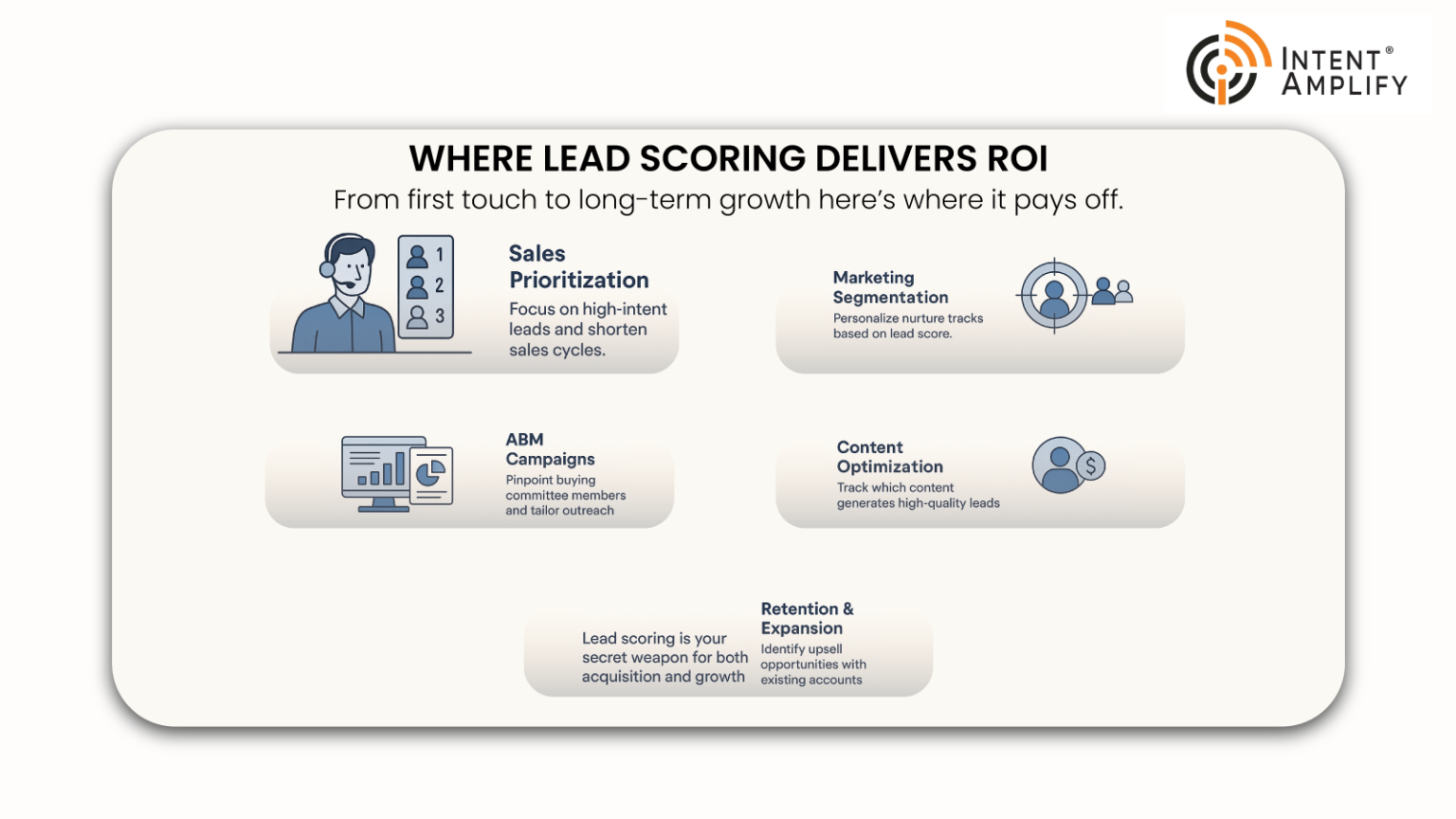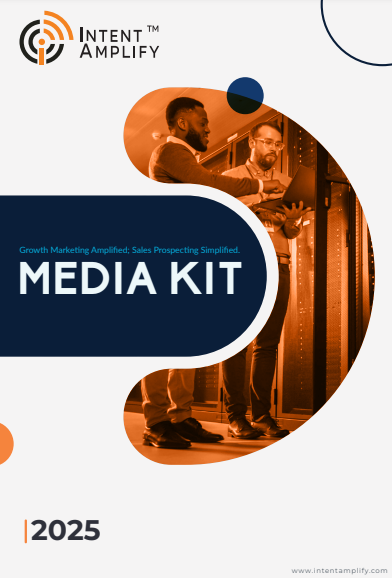
What Is Lead Scoring in B2B? A Guide to Models, Methods & Use Cases
- Last updated on: July 17, 2025
You’re creating leads. Some sign up with a form. Others watch your webinars. A few even ask for demos. But who is worth your sales team’s attention?
That’s the problem lead scoring solves.
In B2B marketing, there is no room for guessing. You require a system that sorts authentic buyers from browsing customers quickly. Lead scoring gives structure to that process.. It scores each lead on the likelihood of conversion, so your salesforce can concentrate on what counts: high-fit, high-intent prospects. This is not vanity metrics. This is about moving a qualified pipeline
“Not all leads are equal—and lead scoring ensures your team knows the difference.”
— Sangram Vajre, Co-founder of Terminus
In this article, you’ll find out how to create a lead scoring model that aligns sales and marketing, increases efficiency, and directly impacts revenue. We’ll cover tested models, scoring methods, and actual applications you can put into practice today.
What Is Lead Scoring in B2B?
At Intent Amplify, we define lead scoring as a data-driven method that ranks and prioritizes leads based on how well they match your ideal customer profile and how actively they engage with your brand. It combines firmographic details (like job title, industry, company size) with behavioral signals (such as website visits, email opens, or demo requests) to assign each lead a score that reflects their likelihood to convert.
This allows marketing and sales teams to focus their efforts where it matters most – on leads that are both a good fit and ready to take the next step. Lead scoring is not just about ranking contacts; it’s about creating a predictable, scalable way to turn interest into qualified pipeline and revenue.
Think of it as a filtering mechanism. If your pipeline is packed with inbound leads from various sectors, you can’t treat them all the same way. Some are sales-ready. Others need nurturing. Lead scoring tells your team exactly who to engage, when, and why.
Why Lead Scoring Matters in B2B Marketing
In a world overflowing with data, knowing who’s ready to buy and who’s not is gold. Lead scoring gives you that clarity.
For B2B companies, lead scoring streamlines operations in three critical ways:
- It boosts conversion rates. When sales focus on high-quality leads, close rates go up.
- It shortens sales cycles. Reps don’t waste time chasing low-fit prospects.
- It improves marketing ROI. Campaigns can be optimized around lead behavior that converts.
Without lead scoring, your sales team is shooting in the dark. With it, every outreach becomes intentional. It brings alignment between marketing and sales – something B2B teams often struggle with.
How Lead Scoring Works: The Core Concept
At its core, lead scoring assigns numerical values to prospects based on their fit and engagement.
Fit scoring considers firmographics like industry, company size, revenue, or job title.
Engagement scoring looks at behaviors – web visits, email clicks, content downloads, and demo requests.
Each action or attribute gets a score. For example:
- Downloading an ebook: +5
- Visiting pricing page: +10
- Job title = “CMO”: +20
- Company size = <50 employees: -5
Add it all up, and you have a lead score. This score helps determine:
- Which leads go to sales
- Which goes into a nurturing sequence
- Which gets disqualified entirely
It’s simple in concept, but mastering it requires choosing the right model and adapting it to your sales process.
Key Components of an Effective Lead Scoring Model
If your lead scoring isn’t accurate, you’ll either burn good leads or flood sales with unqualified ones. Here’s what your model needs to get right:
- Firmographic Fit: Industry, company size, revenue, location
- Demographic Profile: Job title, seniority, department
- Behavioral Signals: Pages visited, webinars attended, email opens
- Engagement Frequency: Number of sessions, return visits
- Intent Signals: Searches, pricing page views, product interest
The most successful B2B models blend explicit data (e.g., job title) with implicit data (e.g., time spent on your site). Bonus tip: Adjust the weight of each score based on historical win data. That’s how you go from good to great.
Common Lead Scoring Models You Can Use
There’s no one-size-fits-all in lead scoring. Here are the most widely used models in B2B:
1. Rule-Based (Manual) Scoring
This is the classic model. You assign scores manually based on defined criteria.
- Pros: Simple to set up.
- Cons: Needs constant tweaking. Risk of bias.
2. Predictive Scoring
AI or machine learning predicts which leads are most likely to convert based on past data.
- Pros: Accurate, data-driven.
- Cons: Requires a large dataset and a clean CRM.
3. Hybrid Scoring
Combines manual scoring with AI insights. Human intelligence plus machine efficiency.
- Pros: Balanced approach. Customizable yet scalable.
4. Behavioral Scoring
Focuses exclusively on how a lead engages with your brand – emails, downloads, webinars, etc.
- Best for: Content-heavy funnels and inbound-driven strategies.
5. Account-Based Lead Scoring
Perfect for ABM strategies. Scores not just individuals, but entire accounts.
- Best for: Enterprise sales and multi-stakeholder deals.
Step-by-Step: How to Build a Lead Scoring System
You don’t need an advanced tech stack to get started – just a structured approach.
Step 1: Define Your Ideal Customer Profile (ICP)
Identify your best buyers. What do they have in common? Industry, revenue, team size, role? Start by analyzing your most successful clients. Look at firmographic data like annual revenue, number of employees, geographic location, and industry. Don’t stop at surface-level traits—dig into the roles and job functions of key decision-makers. If your top customers are mid-sized SaaS firms with CMOs driving purchases, that’s your benchmark. A strong ICP creates a clear lens through which all leads are evaluated, ensuring your scoring model filters in only the most promising prospects.
Step 2: Map Out Key Actions
Which actions signal buying intent? A contact form? Pricing page visit? Free trial? Track every digital touchpoint that indicates a lead’s interest. These could include webinar signups, demo requests, case study downloads, or multiple product page visits. Assign a higher weight to actions that reflect intent to buy, such as requesting a quote or engaging with your sales team. Don’t overlook indirect signals – return visits or reading blog content over time often show growing interest. Mapping these actions helps prioritize leads not just by who they are, but by what they do.
Step 3: Assign Point Values
Give positive and negative scores. E.g., +15 for a C-suite title, -10 for students or interns. Assigning points brings structure to your lead evaluation. Start by attributing higher scores to actions and characteristics closely linked to conversions in your past deals. For example, job titles like CEO or VP of Marketing might get +20, while interns or unrelated departments receive negative scores. You can also subtract points for inactivity or unsubscribing from emails. Use a balanced mix of firmographic and behavioral data. The goal is to create a scoring system that reflects actual buying likelihood, not just surface interest.
Step 4: Set Thresholds
Decide when a lead is “sales-ready.” For example, leads above 60 points get routed to sales. Once you have scores in place, determine what qualifies as a Marketing Qualified Lead (MQL) or Sales Qualified Lead (SQL). For example, a lead that visits your pricing page, downloads a whitepaper, and holds a director-level title might cross the threshold at 65 points. Leads below that can be nurtured through targeted email flows. Setting clear thresholds eliminates guesswork and creates smoother handoffs between marketing and sales, reducing friction and missed opportunities in the pipeline.
Step 5: Test and Refine
No model is perfect on day one. Analyze results monthly and adjust based on conversions. Use your CRM and marketing automation tools to monitor how scored leads perform over time. Are high-scoring leads converting? Are low-scoring leads being ignored, but turning out to be valuable? These insights are critical for refining your point values and thresholds. Regular feedback from sales can validate or challenge your assumptions. Your lead scoring model should evolve with buyer behavior, new content offers, and shifting market conditions. Continuous refinement is what separates guesswork from revenue-generating precision.
Practical Use Cases: Where Lead Scoring Delivers ROI
Lead scoring isn’t just a CRM feature – it’s a revenue multiplier. Here’s how B2B teams apply it:
1. Sales Prioritization
Reps work the highest-scoring leads first. No more “first come, first served”—just smart selling.
Your sales team can only focus on so many leads each week. Lead scoring eliminates the guesswork by clearly showing who’s most likely to convert. A rep logging into the CRM knows exactly which contacts to call first—and why. Instead of wasting time on lukewarm leads, they pursue those showing real buying intent. This boosts sales efficiency, shortens deal cycles, and keeps reps focused on revenue-generating conversations, not dead ends. Sales feel more like strategic targeting and less like a lottery.
2. Marketing Segmentation
Segment leads into nurture tracks based on score tiers. Tailor messaging for each group.
Not every lead is ready for a sales pitch. Lead scoring helps marketing teams group contacts based on readiness. High scorers might get immediate outreach, while mid-tier leads enter targeted nurture campaigns. Those with low scores could receive educational content to build interest over time. This segmentation ensures no lead gets ignored, and no one gets pitched too early. You’ll move leads through the funnel with messaging that matches their intent and stage, improving email engagement and conversion rates.
3. ABM Campaigns
Score the entire buying committee within a target account. Identify which contacts are most engaged.
Account-Based Marketing isn’t just about knowing the company – it’s about knowing who in the company is actively engaging. Lead scoring within ABM helps identify key stakeholders based on behavior. If the Head of Procurement watches a pricing demo while the CMO downloads your case study, they’re showing different types of intent. Scoring these contacts individually lets your team know who to prioritize in outreach, who to warm up with content, and how to personalize the message to influence the whole buying committee.
4. Content Optimization
See which content pieces drive the highest lead scores. Focus your resources on what works.
Not all content contributes equally to the pipeline. By integrating lead scoring with your content performance tracking, you can uncover which assets – webinars, guides, blog posts are influencing the highest-quality leads. For example, if demo requests spike after leads read a particular whitepaper, you know it’s a revenue driver. This insight helps you double down on formats and topics that push leads toward sales readiness, rather than just views or clicks. It’s content marketing backed by conversion intelligence.
5. Retention & Expansion
Score existing customers for upsell potential based on product usage or engagement.
Lead scoring isn’t limited to new acquisition—it’s just as powerful for customer growth. By tracking engagement data post-sale, like product usage, logins, support tickets, or content downloads, you can score customers for upsell or cross-sell potential. If a customer’s score suddenly increases, it may be time for your Customer Success or Account Management team to engage. Similarly, a drop in score could signal churn risk. This turns your lead scoring model into a proactive growth engine, not just a conversion tool.
Common Mistakes to Avoid in B2B Lead Scoring
Even the smartest teams can fumble if they fall into these traps:
- Overcomplicating the model: Keep it simple. Too many variables confuse both systems and humans.
- Relying only on demographics: Behavioral signals often tell the real story.
- Ignoring negative scoring: Not all engagement is positive. Spam clicks? Career page visits? Score them down.
- Set-and-forget mindset: Your scoring model should evolve with your funnel and customer behavior.
- No sales feedback loop: Regularly sync with sales to validate scoring accuracy.
Avoid these, and you’ll be miles ahead of competitors using static, outdated systems.
Tools and Platforms That Enable Lead Scoring
You don’t need to build it from scratch. Several B2B platforms make lead scoring easier:
- HubSpot: Great for SMBs with built-in manual scoring and workflows.
- Marketo: Enterprise-grade with deep customization and predictive scoring.
- Salesforce Pardot: Seamless integration with Salesforce, ideal for large teams.
- Zoho CRM: Lightweight and budget-friendly.
- 6sense & Demandbase: Best for predictive and account-based lead scoring.
If you’re scaling, consider pairing lead scoring with intent data tools and enrichment platforms like Clearbit or ZoomInfo.
Measuring the Success of Lead Scoring
A lead scoring model is only as good as its outcomes. Here’s how to know if yours is working:
- Higher MQL-to-SQL conversion rates
- Shorter average sales cycle
- Improved close rate on scored leads
- Sales satisfaction (qualitative feedback)
- Reduction in unqualified leads routed to sales
Use your CRM dashboard to track performance and adjust monthly. What’s measured improves, and lead scoring is no exception.
Lead Scoring Is the Backbone of Modern B2B Sales
Lead scoring isn’t just a marketing exercise. It’s the bridge between engagement and revenue. In 2025, when buyer journeys are non-linear and attention is scarce, scoring leads accurately can make or break your pipeline. It’s how you cut through the noise and connect with real buyers at the right time.
Want a system that qualifies leads with precision and aligns your revenue teams?
Partner with Intent Amplify to build a lead scoring framework tailored to your B2B goals.
FAQs
1. What is a good lead score in B2B?
A good lead score varies by business, but typically, leads above 60–70 points are considered sales-ready in B2B.
2. How do I implement lead scoring in HubSpot or Salesforce?
Both platforms offer built-in tools. Create scoring rules based on firmographic and behavioral fields, then test and iterate them.
3. How does lead scoring differ from lead grading?
Scoring focuses on engagement, while grading assesses fit. Many B2B orgs use both for better targeting.
4. Is predictive lead scoring worth it for small teams?
If you have enough data and traffic, yes. But manual models work well when resources are limited.
5. How frequently should I update my lead score model?
At least quarterly. Adjust based on sales feedback, performance metrics, and changes in your ICP or funnel.






